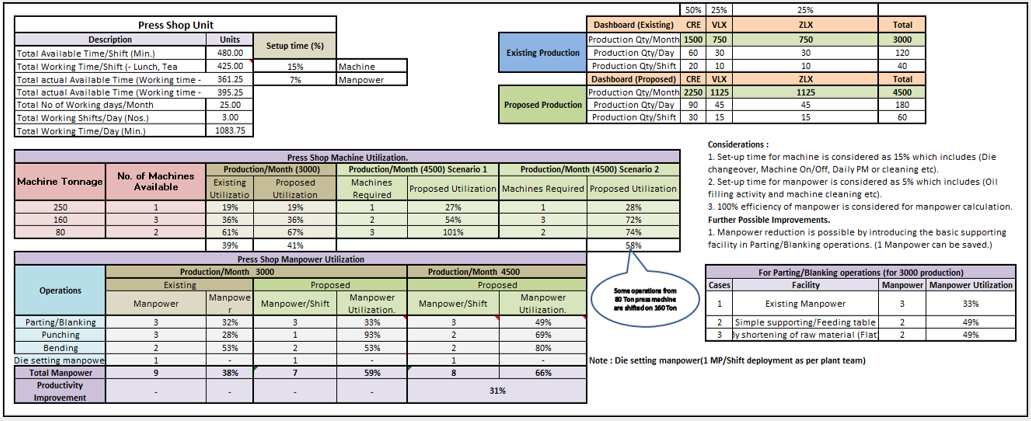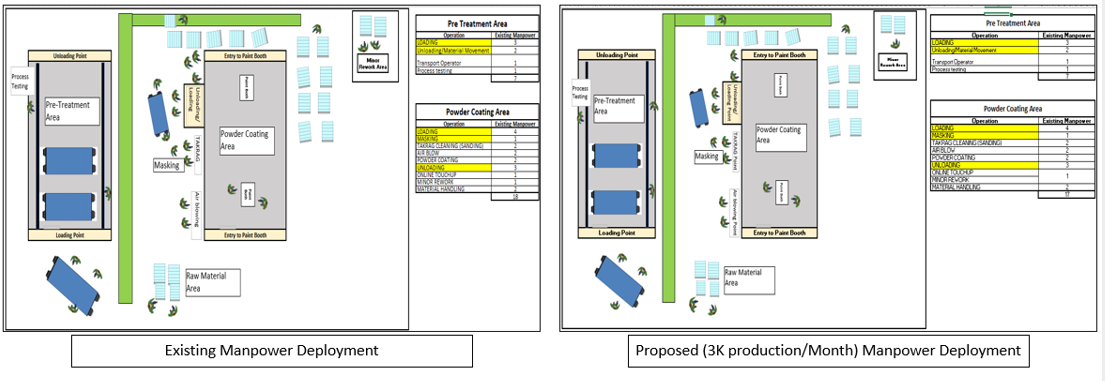Challenges Encountered
Even with a highly established production line, the client encountered some issues that were capping performance:
- Poor task allocation and repetition-based workloads that caused high manpower fatigue.
- Inefficient utilization of manpower, with workflows resulting in wasted time.
- Inadequate data-driven planning tools, capping visibility into actual production capability.
- Suboptimal plant layout, increasing unnecessary motion and travel
- The absence of automation in simple but labor-intensive processes.
These challenges not only impacted productivity but also reduced the factory's ability to scale up to future production targets.









